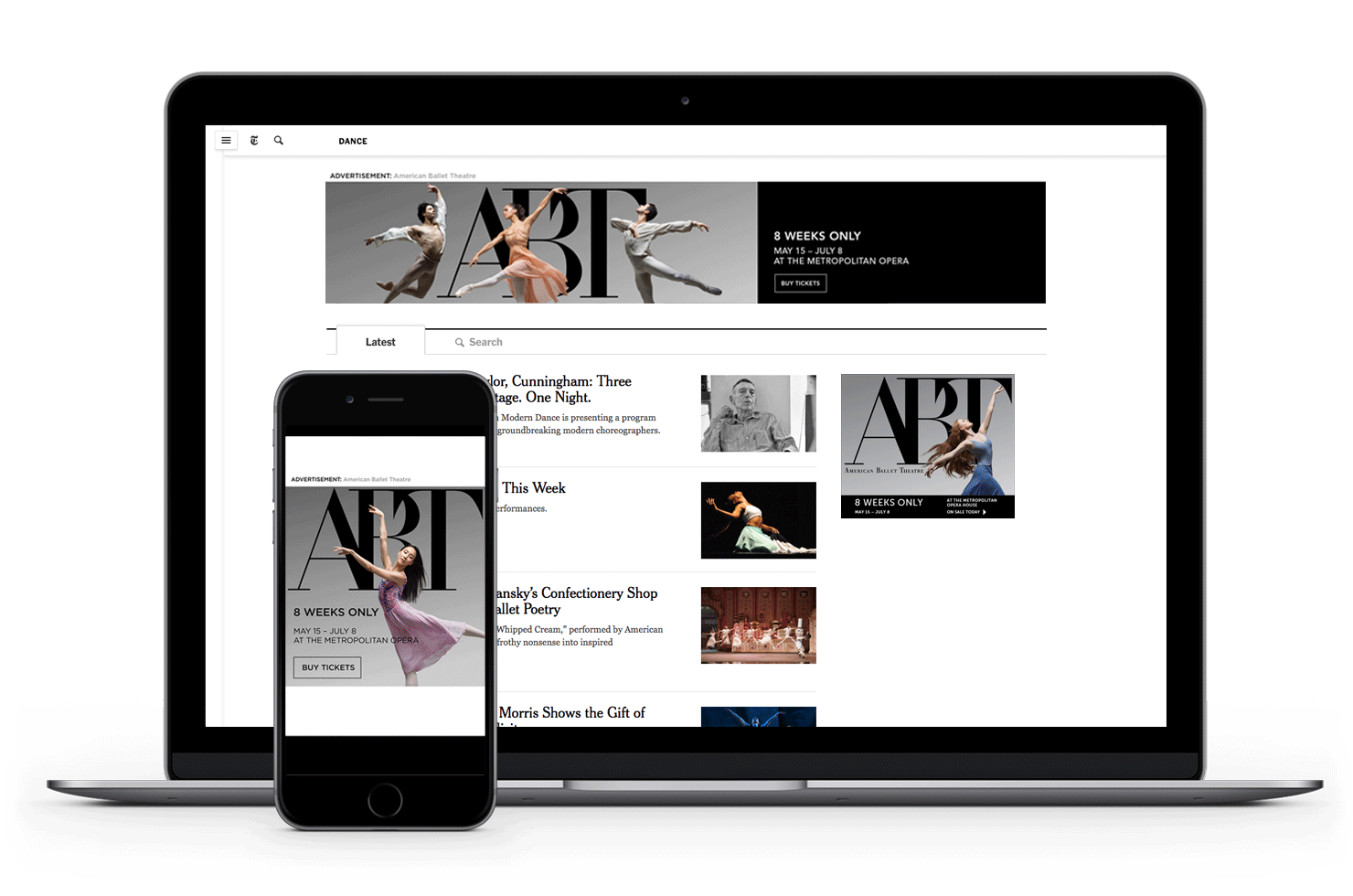Content sponsorships began in the late 1970s and quickly became an increasingly used communication tool in planning external relations.
Sponsorships, therefore, constitute a way to promote the image of the company, even if it is not possible to consider them an exclusive element, but one of the components of the marketing mix; in fact, a close interdependence between these communication initiatives and the other elements of the marketing strategy is necessary in order to develop integrated communication.
Table of Contents
ToggleDifference between advertising and sponsorship?
Sponsorship: it consists in associating the name of a company or a product (sponsor) with a particular event (sponsee), in order to obtain a positive return in terms of reputation and image, benefiting from the communicative potential of the event itself.
Unlike advertising, sponsorship is aimed at promoting the image of the company indirectly by linking the sponsor’s brand to the sponsored event.
This does not mean, however, that it presents less efficacy than classic advertising, but rather tends to appear more incisive precisely because it relies on events with a high image content that are immediately reflected in the public.
The company chooses to gain visibility from those who participate in the event because it considers that audience homogeneous or similar to the message it intends to convey.
Furthermore, by repeating the news, guaranteed by the mass media, it is possible to get in touch with a wider audience.
In the case of cultural events, for example, the company spreads the patronage of the initiative through the media and seeks to obtain editorial articles and the attention of opinion leaders and influencers to amplify the dissemination of its messages.
Sponsorship sectors
Based on the sector in which the sponsorship applies, it is possible to distinguish between:
#1. sports sponsorship: it is the agreement by which a company obtains that its brand is highlighted by a person or organization that carries out sports activities that are very popular with the public in exchange for compensation.
This allows the company to reach a high number of contacts and above all to associate its brand with the values brought by the character or organization.
If in the recent past the entrepreneur chose the event to sponsor based on his sporting passion rather than market research, today, the initiatives of the companies are certainly more rational and attentive to marketing strategies.
Based on commercial agreements, the company can play the role of main, official sponsor, co-sponsor, technical sponsor, official supplier, partner.
Sponsorship contracts can be activated on a local or national scale, or internationally when there are large events, such as Olympics or international tournaments, World Championships.
#2. Television sponsorship: it is the financing and support activity in favour of television programs in order to gain notoriety for their brand or product
It consists of the insertion of a brand or product within a television program.

Often his presence is not limited to a backdrop or a quote but is part of a game that can involve the studio audience or viewers who intervene by calling from home.
It is actually a communication tool that stands at the border between advertising, sales promotion and sponsorship.
Unlike the classic TV commercials, created and produced by advertising agencies, the TLPs are developed directly by the broadcaster.
Unlike telesales, they do not allow the immediate purchase of the advertised product.
#3. cultural sponsorship: consists of sponsoring events or initiatives aimed at protecting, enhancing or promoting any cultural heritage.
The methods of intervention of private companies in relation to the artistic and cultural heritage can be summarized in three different types:
Direct intervention (establishment of special cultural societies connected to the parent company, creation of cultural foundations, the launch of medium-long term projects);
Autonomous intervention (presence of internal structures within the company that manage all the moments relating to the event to be sponsored);
Co-managed intervention (collaboration with the organizer of the event).
#4. environmental sponsorship: concerns the protection and safeguarding of the environment.
It is proposed to establish a better relationship with the public and show how companies are attentive to their expectations towards the issue of environmental sustainability (see Green marketing).
Sponsorships, therefore, become an integral part of a company’s culture, or of that system of values which, from an entrepreneurial, ethical and institutional point of view, can produce a true corporate identity.
#5. social sponsorship: any communication through which a sponsor contractually provides financing or support of another kind, in order to positively associate its image, identity, brands, products or services to an event, an ‘activity, an organization that pursues purposes of social utility or public interest.
Social sponsorships largely concern associations which, thanks also to the contributions of sponsors as well as increasingly sophisticated cause-related marketing actions, progressively acquire visibility and importance (see Social Marketing).
It should be noted that one of the main reasons that push the company to resort to social or environmental sponsorship is that of being publicly recognized as socially and ethically responsible.
In implementing Corporate Social Responsibility (CSR), the company undertakes a series of social commitment initiatives that can also manifest themselves in the form of sponsorship of events or initiatives promoted by non-profit organizations.
More generally, among the types of partnerships that the company can choose to implement in the social field, there are also cause-related marketing operations, corporate giving operations and social events.
Online sponsorships
The term sponsorship, in the digital field, refers to the sponsorship by an advertiser of a website (or of a specific area / channel of a site) to create a positive association between the brand to be promoted and the sponsored site.
More in detail, it consists in the insertion of brand identification elements (e.g. original logo or graphics) within a specific site considered homogeneous or similar to the message that the advertiser intends to transmit to potential consumers through communication activities.
The web sponsorships, if consistent with the objectives and the corporate image, allow obtaining high visibility, to effectively convey one’s values and to establish stable relationships with the relevant public.
However, it is necessary to carefully evaluate the compatibility between the corporate image and that of the site to be sponsored.
Finally, it should be noted that in the current language, the term sponsorship is often referred to as the sponsored content of a website.
These are advertising content specifically created for the advertiser, generally, offered with an editorial style and/or with a graphic design similar to that of the site hosting it.
In some cases, in order to bring out the promotional message more forcefully, the advertiser can combine the sponsored content with advertisements of different formats: display advertising, native advertising, video advertising etc.
For example, Instagram and Facebook continue to be confirmed as the main platforms for advertising online.
In this step-by-step guide, you will have all the knowledge to be able to advertise accurately and attentively, optimize your budgets and reach targeted targets (people really interested in your posts or your products).
This guide has a simple and clear goal: to explain step-by-step how to sponsor online content.
Many know only the basic functions to promote a post on the internet, but there are many questions when dealing with this topic: how can I target my sponsored content? What type of content can I promote? How much do I need to spend?
Well, in this manual I will explain to you in small steps where to start and how to extricate yourself in this complex world of content sponsorship.
Promote your content on Social Media
You have to plan. In fact, a sharing program is recommended, which alone can double the traffic on the content!
For this you should follow a pattern like the following:
Upon publication – The content is online for the first time on the blog.
The same day – Share it on social media, about 2-3 hours later.
The next day – We share again on social media.
The following week – Another series of messages pre-programmed for the following week.
The following month – Another series of messages pre-programmed for the following month.
In the following “x” months – If desired, we can pre-schedule the republication even beyond the third month.
Other tips:
- Changing the launch text, preview, allows the content to remain fresh. Always try to create three different introductions to your content.
- Ask questions. Instead of the title, the launch text or the odds. In the case of this article, for example, we could write: “Are you doing everything possible to promote your content”?
- Use hashtags to make your content more findable.
Tag people and ask them to contribute (if you have relationships that allow it, don’t spam!) - Use citations or statistics from the article as a new introductory text for further sharing.
Promote your content to your Content List
If you have a marketing list, which I always suggest you have, use it.
Many people on the web use weekly or biweekly newsletters. Use them as a promotional tool for your latest posts.
Use the monthly newsletter only to share posts that are actually relevant to the topic. Also, make sure your site/blog has an RSS feed.
Use all branded or relevant hashtags
Make sure you create traceable routes. Use link generators (eg Bitly) to produce them.
Promote your content in Syndication
There are platforms for sharing content such as B2Community and SteamFeed that allow publication only with certain types of accounts, some are free, others for a fee (Outbrain).
What is the suggestion:
Look for trafficked sites that offer Syndication (eg B2Community) and ask to be part of the program.
Check the offers of the sites that ask you to use the contents (SteamFeed and others).
Promote your content with online advertising
There are so many ways to promote content. These are the easiest / fastest / common:
– Facebook ads / Instagram ads
– Remarketing ads (Facebook or Google – are ads that “follow” users thanks to cookies)
– Twitter ads
– Google AdWords

Create a sponsored campaign on Instagram
One of the tips I can give you is to start sponsoring content on Instagram.
Why do it on Instagram?
Instagram has reached truly stratospheric numbers. In the first quarter of 2020, the Facebook-owned platform reached 2.6 billion active users every month: over 1 billion people wake up every day with Instagram notifications, publish stories, share photos and thoughts.
To create an advertisement on Instagram, we will first think about 6 different aspects, which I try to summarize in this way:
Benchmark and competitors
We will do a preliminary analysis of what our competitors are, we will try to understand how they move, what advertising strategies they use and how to try to speak to their own market niche.
Goals of the campaign
Once the campaign strategy has been clarified, it is important to clarify whether the goal of your sponsor will be to generate traffic to your website, to your profile or to receive interactions (like and comments) on a post.

Content
Content is the king. All marketers know this claim well. Content is very important to make an advertisement work on every channel.
My advice is to always create original content, which clearly conveys a message, which are ethical and which respect the basic rules of the Facebook policy (among many.
The most important tips are: do not use nude photos or content that incite hatred, alcohol consumption or use of weapons and not to use content that contains no more than 20% of the text).
- Target and positioning
Once you understand who we want to address, establishing and setting the target will be very simple: we need to define the public, their interests, where they are positioned and we will have to choose in which Instagram spaces to show our sponsored.
- Budget
The budget is the part that is very easy to underestimate in a campaign: based on our goal and based on our financial capabilities, we will try to attribute the right budget to make the campaign work perfectly.
- Analysis
After publishing the campaign, the analysis of data and results will help us optimize and improve future sponsorships.
Conclusion
Content sponsorship could have great impact on your business reputation and growth online. It only require a careful and a systematic approach.
In any case, you will have to understand your audience and figure out which type of content will be appealing to them and most especially where they will be able to see your content.
So, this was just the example of a platform through which you could enhance your content and make yourself known on a large scale!
Keep in mind that the 6 tips given by me above can be used whenever you plan to sponsor online content.
Let me know in the comment section if you will use one of these tips to sponsor your content!
See you soon.





![60+ Best Free WordPress Themes [Best pick for 2022] Best Free WordPress Themes](https://adstargets.com/blog/wp-content/uploads/2022/09/Best-Free-WordPress-Themes-150x150.png)


